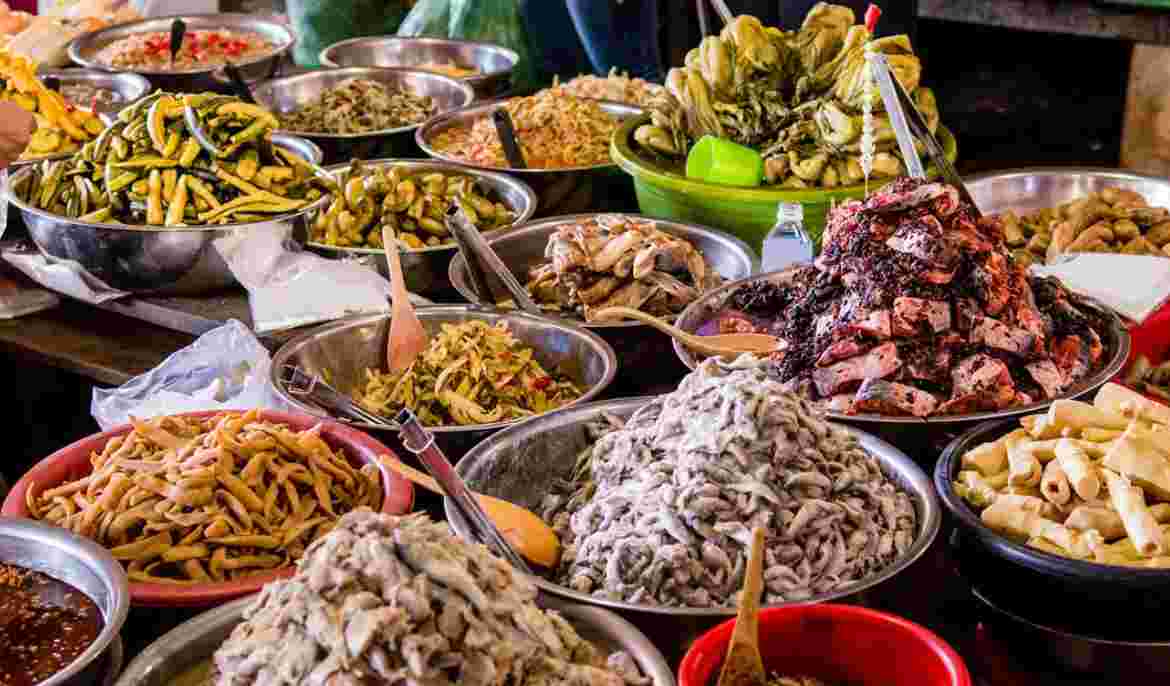Because of the country’s incredible richness in waterways including the Mekong, Sap and Bassac Rivers, as well as the massive lake, Tonlé Sap, freshwater fish and seafood, such as salmon, squid and prawns, is especially popular, featuring prominently in soups, curries, stir-fries and salads. Beef, pork, chicken, duck and other poultry are widely available but more expensive than fish dishes. For fearless eaters, other less-common sources of protein include locusts, fried tarantula, cooked scorpions, and grilled snake.
Cambodia’s staple is rice – indeed, the Khmer term for “to eat” is “nam bai”, which directly translates to “eat rice”. Cambodia has the regular aromatic rice, but also a delicious glutinous sticky rice. Other important starches include manioc, taro and sweet potatoes. If rice isn’t on the table, its place is taken by noodles. Cambodians love their greens: vegetables are served crisp and fresh, or wok-fried in curries, soups and stews. Spices, herbs, such as basil, mint, and coriander, rhizomes, dried fruits, flowers, and leaves flavor and garnish the food.
The food in Cambodia has been shaped by the country’s culture and history, which includes a lasting French colonial influence, as in Vietnam and Laos, not only in the form of French-style baguettes but also buns and other baked goods.
The hallmark of Khmer cuisine is prahok, a fermented paste made from a small fish called trey riel, grey or brown in color, with a strong odor and an intense flavor. It is used both as a condiment and as a main element in a variety of Khmer dishes, and it accounts for a large portion of protein in the Khmer diet. Another foundation of many Cambodian dishes is Kroeung, a distinctive spice paste made with a base of lemongrass, kaffir lime and galangal.
Typically sweet and tangy, Cambodian salads incorporate shredded meats and vegetables, mint and other herbs, banana flowers, and sour, shredded fruits like green mango and papaya. They are usually mixed with a fish-sauce dressing.
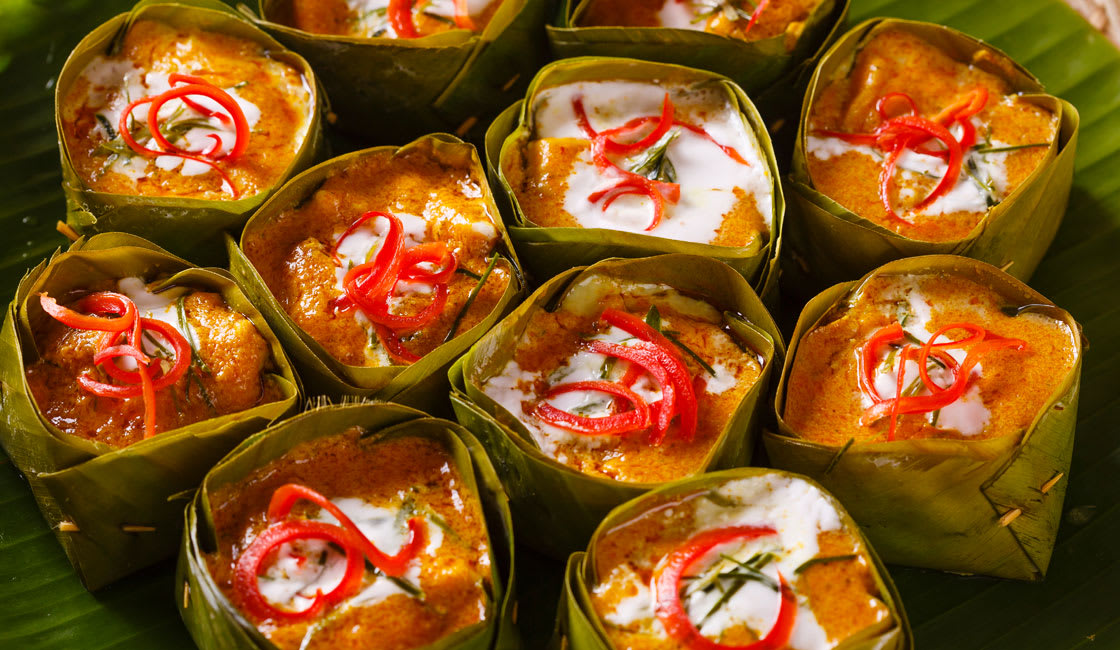
1. Amok (Coconut fish curry)
Amok trey is Cambodia’s national dish, a fragrant and spicy coconut fish curry tenderly steamed in banana leaves, which gives it a mousse-like texture which all but makes it melt in the mouth. The blended spice paste, kroeung, is also added to the dish. Chicken, tofu, and snails can be used as a substitute for the fish.
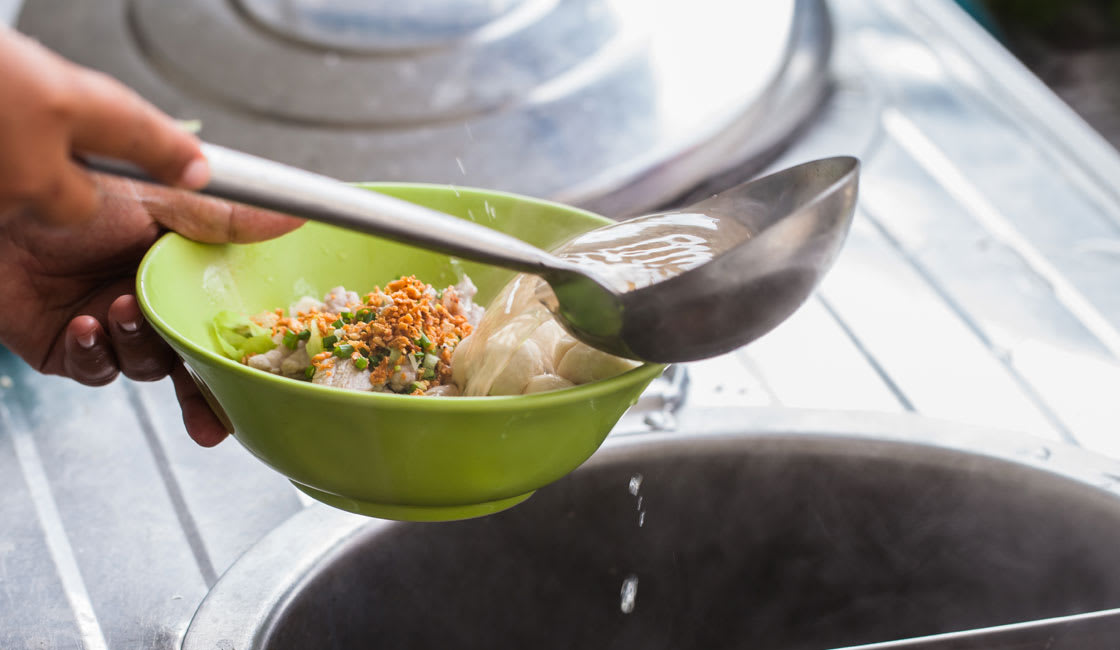
2. Kuy teav (Noodle soup)
Cambodia’s noodle soup is a popular breakfast dish, commonly bought from street vendors. It is usually made from rice vermicelli and beef or pork bones. The broth is flavored with fried shallots, green onion, garlic and bean sprouts. Pork or beef balls are then added just before serving.
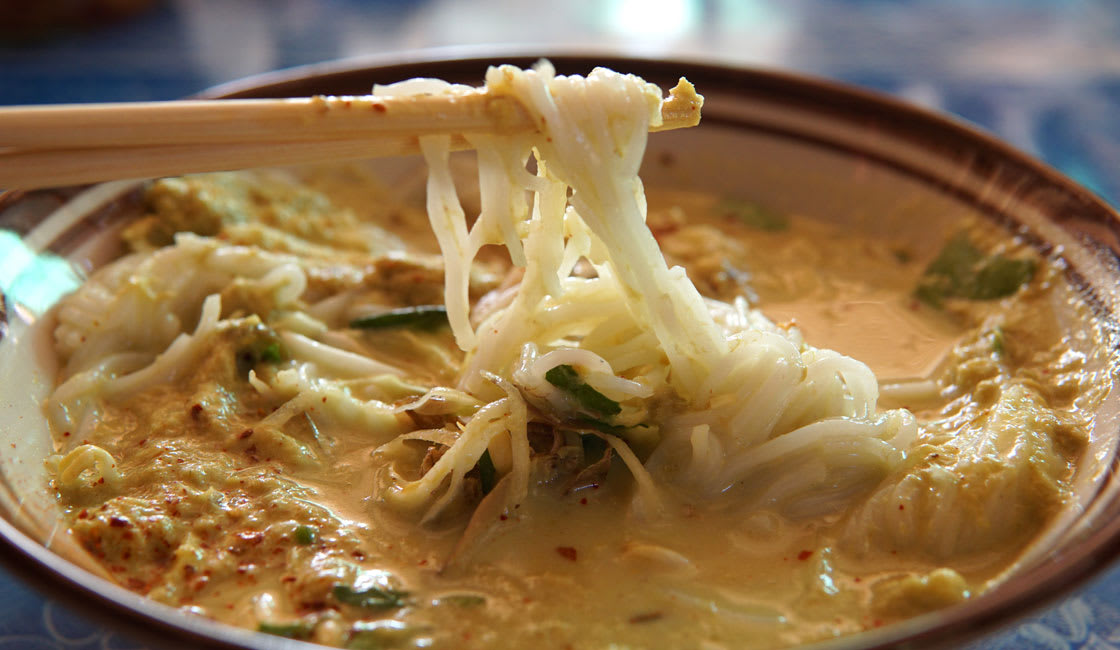
3. Nom Banh Chok (Khmer noodles)
Num banh chok is another noodle dish that’s typically served for breakfast or consumed as an afternoon snack. These fermented rice noodles are hand-made in stone or wooden mills, saturated with a gravy of lemongrass, kaffir lime leaf, galangal, turmeric and freshwater fish, which has been simmered for hours in coconut milk. This is then topped with raw vegetables such as banana blossom, cucumbers, and water lily stems, and fresh herbs such as mint and basil.

4. Samlar machu (Sour soup)
Samlar machu is made with meat, fish, or seafood and vegetables cooked in a sour broth base. The seasonal local vegetables and herbs might include water spinach, shallots, scallions, tomatoes, kaffir lime leaves, hot basil, cilantro, and lemongrass. There’s also a version that calls for pineapples. Other key ingredients in this dish are the fermented fish paste known as prahok, and the spice paste, kroeung, while typical souring agents include krasaing fruit seeds, tamarind, or kaffir lime juice.
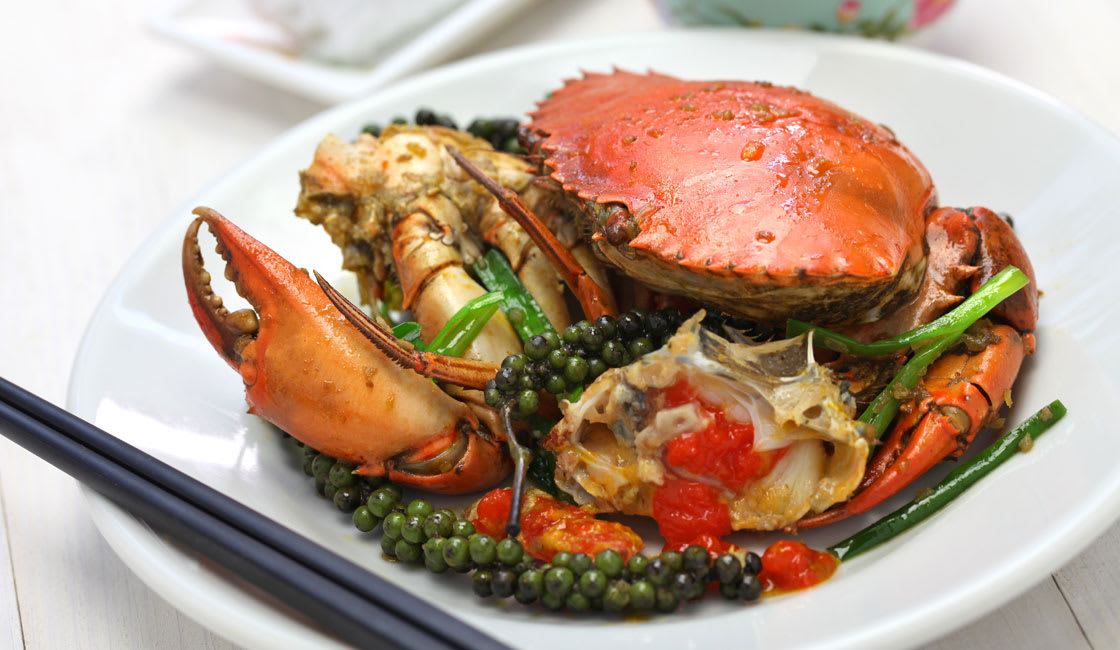
5. Kampot Pepper Crab
Cambodia’s Kampot province is famous for its Kampot pepper crab in which whole fresh crabs are fried up with a garlicky sauce and topped with the famous Kampot green peppercorns. The sweet crab meat is complimented perfectly by the spice and crunch of the pepper for a dish that is delicious and as unique as the peppercorns themselves.
6. Lap Khmer (Beef salad)
This beef salad is prepared with well-done slices of beef marinated in lime juice with shallots, fish sauce, basil, mint, garlic, bell peppers, and spicy chilies. Due to its extremely bold flavors, it’s often eaten as a bar snack.
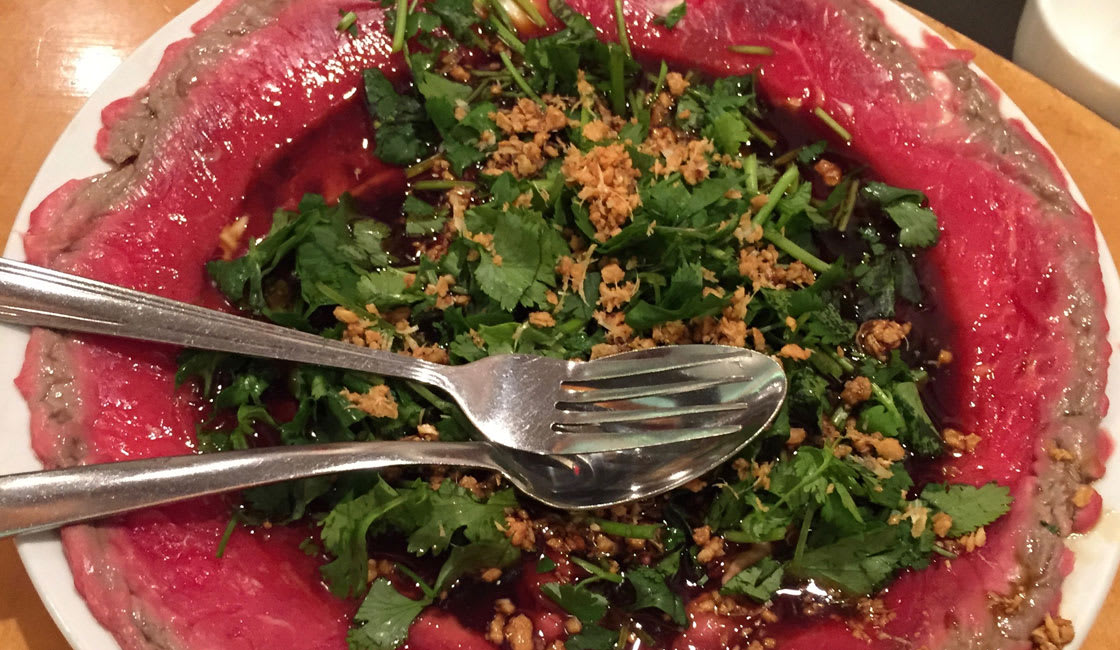
7. Pleah sach ko (Beef ceviche)
Pleah sach ko is typically made with thin, bite-sized pieces of raw beef that are first marinated in lime juice, and then covered with a clear broth of lime juice, chicken soup base mix, fish sauce, and sugar. A variety of chopped up vegetables and fresh herbs are usually added to the dish, Typical ingredients include green eggplants, shallots, garlic, radishes, bell peppers, jalapeño peppers, green onions, and freshly chopped herbs such as saw leaf, lemongrass, basil, mint, and cilantro.
Sour and spicy, the ceviche is usually topped with roasted ground rice and crushed peanuts, and it can be served either warm or chilled. In Cambodia, pleah sach ko is commonly prepared for weddings and similar festive occasions.
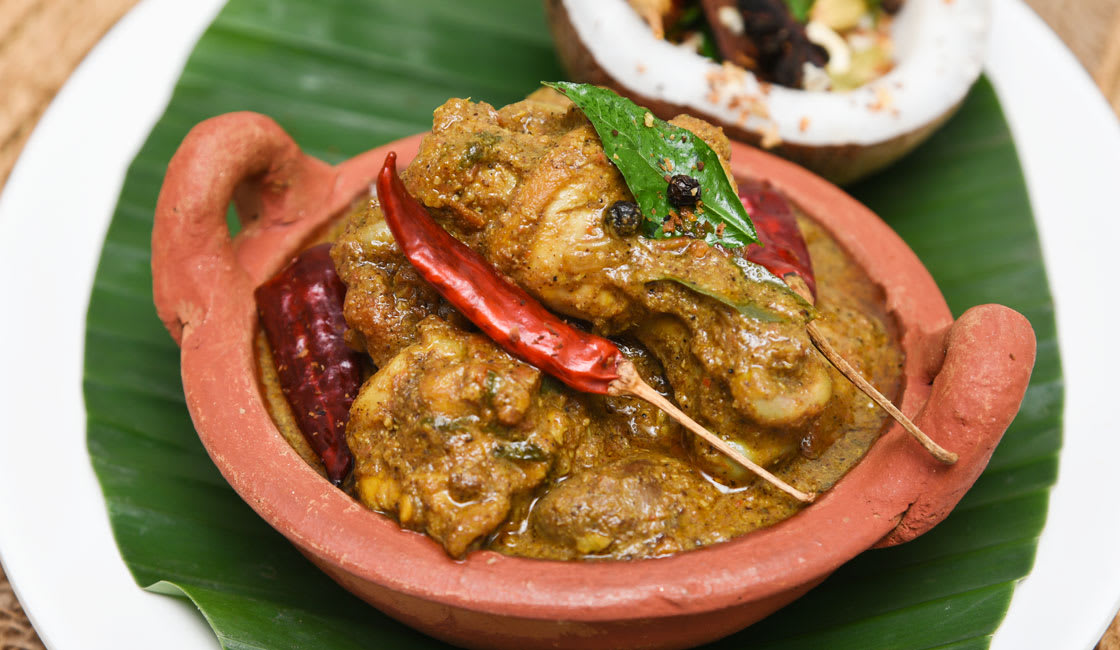
8. Samlar kari (Chicken curry)
This traditional Cambodian chicken curry consists of pieces of chicken in a silky-smooth coconut sauce that is typically flavored with Cambodian kroeung paste, shrimp paste, fish sauce, and palm sugar. The dish can optionally be enriched with vegetables such as purple sweet potatoes, onions, bamboo shoots, carrots, eggplants, yard long beans, or spinach.
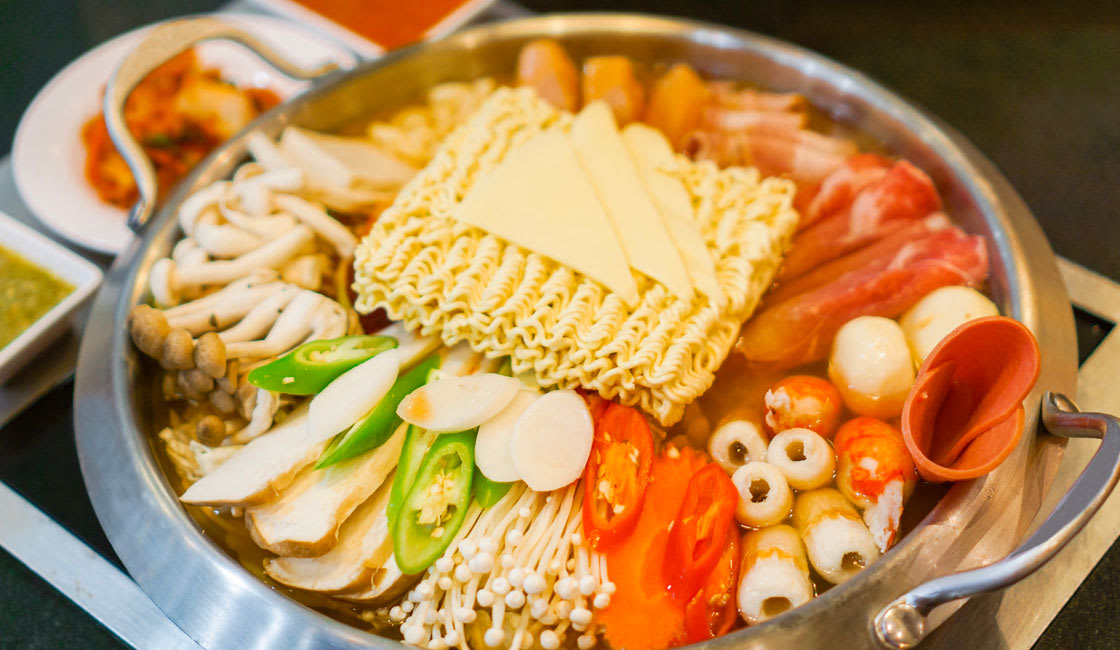
9. Yaohon (Hot pot)
Yaohon is a Cambodian hot pot that contains a variety of vegetables, meat, and seafood. The broth is based on a mixture of coconut milk or cream, chicken broth, and coconut soda, and it is typically flavored with barbecue sauce, fish sauce, soybean curd sauce, kaffir lime leaves, lemongrass, and palm sugar. Typical vegetables include watercress, spinach, and bok choy, while the selection of meat and seafood usually includes beef, chicken, shrimps, squids, oysters, and mussels.
Other ingredients featured in this flavor-packed broth are crushed peanuts, quail eggs, mushrooms, and (optionally) beer.
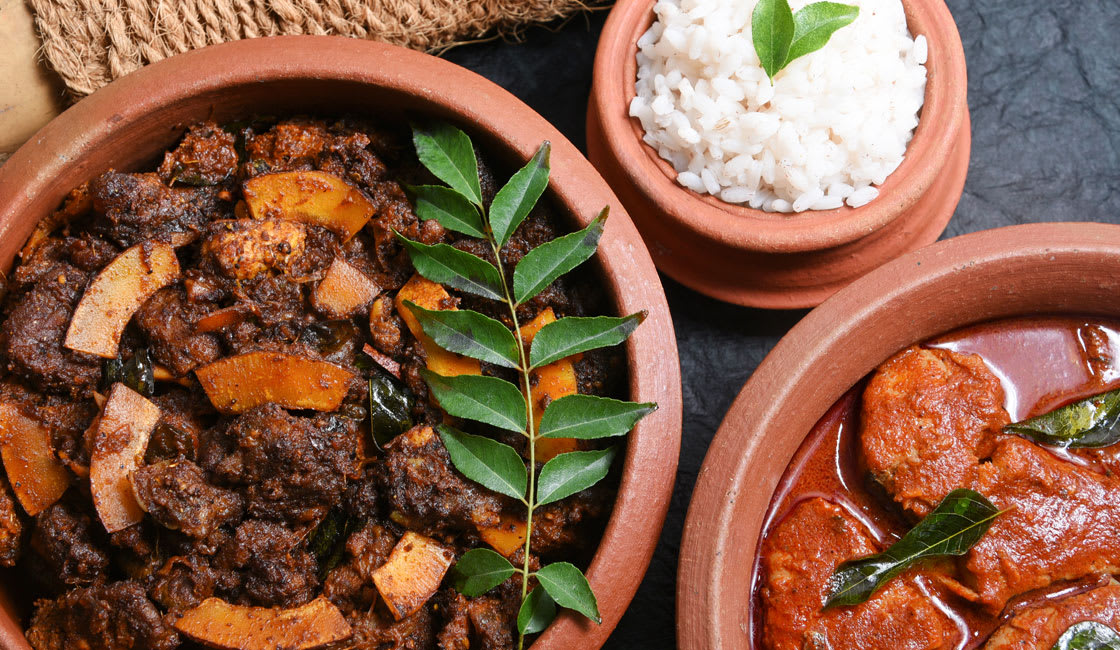
10. Lok lak (Stir fry)
Lok lak is a Cambodian stir-fry utilizing beef, chicken, or shrimp as the key ingredients, although beef is typically the most popular option. For the beef version, a bed of lettuce leaves is traditionally topped with cucumbers, tomatoes, raw onions, and stir-fried beef along with its juices.
Some delicious sweets, which are readily available in covered markets and on street corners. Puddings and sweet soups made with tapioca, coconut milk, beans, corn and fruit are a popular and inexpensive snack typically available in the evening. Sticky rice with coconut and mango, as well as a large range of custards, are also very popular. Relish the experience!


